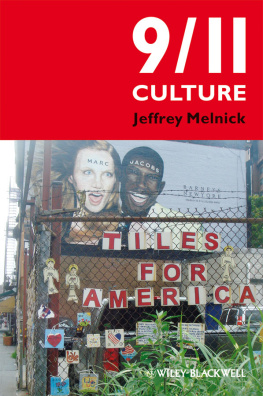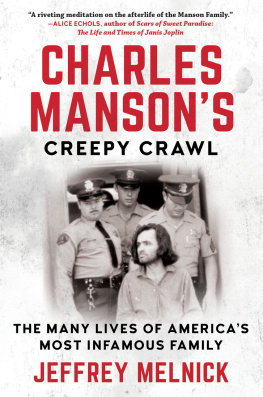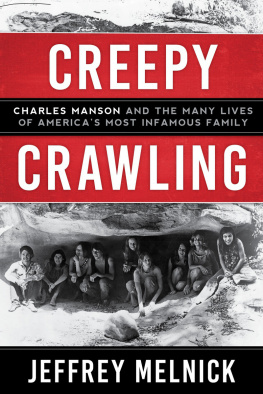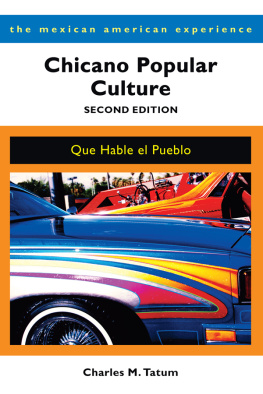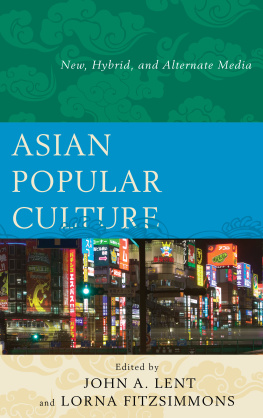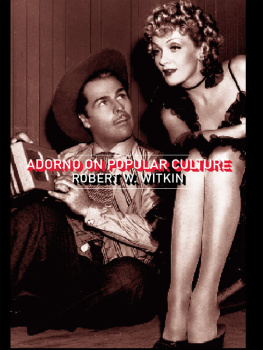
This edition first published 2009
2009 Jeffrey Melnick
Blackwell Publishing was acquired by John Wiley & Sons in February 2007. Blackwells publishing program has been merged with Wileys global Scientific, Technical, and Medical business to form Wiley-Blackwell.
Registered Office
John Wiley & Sons Ltd, The Atrium, Southern Gate, Chichester, West Sussex, PO19 8SQ, United Kingdom
Editorial Offices
350 Main Street, Malden, MA 02148-5020, USA
9600 Garsington Road, Oxford, OX4 2DQ, UK
The Atrium, Southern Gate, Chichester, West Sussex, PO19 8SQ, UK
For details of our global editorial offices, for customer services, and for information about how to apply for permission to reuse the copyright material in this book please see our website at www.wiley.com/wiley-blackwell.
The right of Jeffrey Melnick to be identified as the author of this work has been asserted in accordance with the Copyright, Designs and Patents Act 1988.
All rights reserved. No part of this publication may be reproduced, stored in a retrieval system, or transmitted, in any form or by any means, electronic, mechanical, photocopying, recording or otherwise, except as permitted by the UK Copyright, Designs and Patents Act 1988, without the prior permission of the publisher.
Wiley also publishes its books in a variety of electronic formats. Some content that appears in print may not be available in electronic books.
Designations used by companies to distinguish their products are often claimed as trademarks. All brand names and product names used in this book are trade names, service marks, trademarks or registered trademarks of their respective owners. The publisher is not associated with any product or vendor mentioned in this book. This publication is designed to provide accurate and authoritative information in regard to the subject matter covered. It is sold on the understanding that the publisher is not engaged in rendering professional services. If professional advice or other expert assistance is required, the services of a competent professional should be sought.
Library of Congress Cataloging-in-Publication Data
Melnick, Jeffrey Paul.
9/11 culture : America under construction / Jeffrey Melnick.
p. cm.
title: Nine/eleven culture
Includes bibliographical references and index.
ISBN 978-1-4051-7372-8 (hardcover : alk. paper) ISBN 978-1-4051-7371-1 (pbk. : alk. paper) 1. September 11 Terrorist Attacks, 2001, in art. 2. September 11 Terrorist Attacks, 2001Infl uence. 3. Popular cultureUnited States. 4. Popular cultureSocial aspects. I. Title. II. Title: Nine/eleven culture.
NX650.S49M44 2009
700'.45873931dc22
Acknowledgments
The work I have done in 9/11 Culture grows from a course I have been teaching at Babson College for the past four years and it is my true pleasure to acknowledge the many ways my students have shaped this work. These students have contributed an enormous amount to 9/11 Culture and I wish I had the space to thank the many who went beyond the class requirements to help push this book along. I do want to note how grateful I am to all those students who have sent me songs, clips from movies, television shows, stand-up comedy routines, and other 9/11-related materials, sometimes after graduating from college. It has made this work feel far less solitary than it might have been otherwise.
I am also happy to have the opportunity to thank the Babson Faculty Research Facility, which has supported the research and production of 9/11 Culture. Susan Chern, at the BFRF, offered her usual expert support. I want to express my gratitude to Kate Buckley, formerly a research librarian at Babson, who answered many questions and hunted down many sources. Many others at Babson have supported the teaching and research related to this book: I want to make special mention of Kandice Hauf, chair of my division, Joyce Gordon, Barry Doucette, Mary Driscoll, and Sheila Dinsmoor. I also want to thank my friend and colleague at Babson, Marjorie Feld, who has made Babson a better place to be.
My work here has benefitted greatly from other scholars who have shared their work and insights with me. I am particularly grateful to Jonathan Ritter, who sent me an early copy of the excellent book he co-edited with J. Martin Daughtry (Music in the Post-9/11 World), and Greg Kornbluh, who started off as a research assistant and an excellent one but ended up reading and commenting on the entire manuscript and pushing me to make late-in-the-game improvements to the book. I also want to thank Paul Watanabe at the University of Massachusetts Boston and Nina Tisch of the John F. Kennedy Library for giving me the chance to try out some of this material with their students at the 2008 Summer Institute. At Wiley-Blackwell I have been lucky to work with smart (and patient!) editors Jayne Fargnoli, Margot Morse, and Joanna Pyke.
It is my pleasure to have this chance to thank the artists who have allowed me to reproduce their work in these pages. David Rees, Matt Weber, Eric Fischl, and Vinnie Amess have been wonderfully generous in sharing their art.
I am grateful to Larry Blum who reached into his amazing storehouse of film knowledge (and drafted the support of family members) as he helped me complete the filmography for the book. I also want to thank my Boston Collective colleagues at the Journal of Popular Music Studies: the work we did together on JPMS helped to energize the work I have done here. I have deep gratitude for my dear friend Cindy Weisbart who has asked wonderful questions and offered generative frameworks drawn from her own work as a teacher; she also sent me the link to the Mad Men credits, just under the wire. Aaron Lecklider, Gary Wilder, and Dan Itzkovitz have all been vitally important to me as colleagues and friends. I send my heartfelt thanks also to Judy Smith who has offered me crucial intellectual and professional guidance for over a decade.
Finally, and most centrally, there are three people named Rubin. Jessie Rubin is simply a wonder: she teaches me something new each day and her deep engagement with everything she does is thrilling. I am so grateful for her energetic companionship and I continue to be impressed with her ability to sort out the complicated messages the culture industries direct at her.
Jacob Rubin, with his rigorous refusal of conventional wisdom and his deep wells of empathy, has exerted a profound influence on this book. I have lost count of how many pieces in this book began as conversations with Jake, but I do know that I cannot even imagine doing this sort of work without him. How lucky I am to have him to help me find my way!
Rachel Rubins scholarly work continues to set the bar for me. Her engaged interdisciplinary scholarship constitutes my primary academic model. That she has balanced this academic work with meaningful activism, as president of her union and elsewhere, is simply awe-inspiring. Rachels influence is plain throughout this book, from the overall shape of it to numerous individual insights. Her intellectual generosity is a central fact of my own academic life. Taken together with all she shares me with me as co-parent and life partner, I just feel lucky.
Introduction: 9/11 Questions (and Answers)
It is risky, I know, to call this introductory chapter 9/11 Questions. At the time I am writing, putting 9/11 and Questions into a single, short phrase cannot help but tap into a very complex vein of American political and cultural expressive practices. The 9/11 questions that shape the cyberculture of our time (you will see if you take a quick break from reading this and type 9/11 questions into your favorite search engine) all grow from a shaky and contingent yet powerful consensus that has developed in the years since 2001 about how closely the official narrative of 9/11 matches what actually happened that day. Here is one neat summary of the authorized story of September 11, 2001, taken from what appears to be a self-published childrens book, written by an author whose biographical note claims that she is nationally known for her ability to simplify concepts:

